How social media, gambling and NIL have changed the player, fan dynamic for IU basketball
Trayce Jackson-Davis put it out there for the world to see, the nastiness, the cruel jabs that come with being a college athlete.
"You wonder why players experience mental health issues and problems," Indiana University forward Jackson-Davis wrote earlier this month in a Twitter post that accompanied a photo. In that photo, Jackson-Davis showed a handwritten letter from an Indiana University basketball fan. That fan called Jackson-Davis a "horrible leader."
The bashing went further as the fan told Jackson-Davis he isn't respected by his teammates and that "you're all gutless players who keep getting humiliated."
Jackson-Davis stood tall. He took the high road and responded: "We are going to continue to get better as a team as we continue this journey. Thank you for your words of encouragement! Go Hoosiers!"
Just hours before Jackson-Davis sent that tweet on Jan. 4, Iowa basketball player Patrick McCaffery announced he would take an indefinite leave of absence to address a mental health issue.
McCaffery, son of Iowa coach Fran McCaffery, said in a statement he had been battling anxiety that made him unable to fully prepare and hampered his performance.
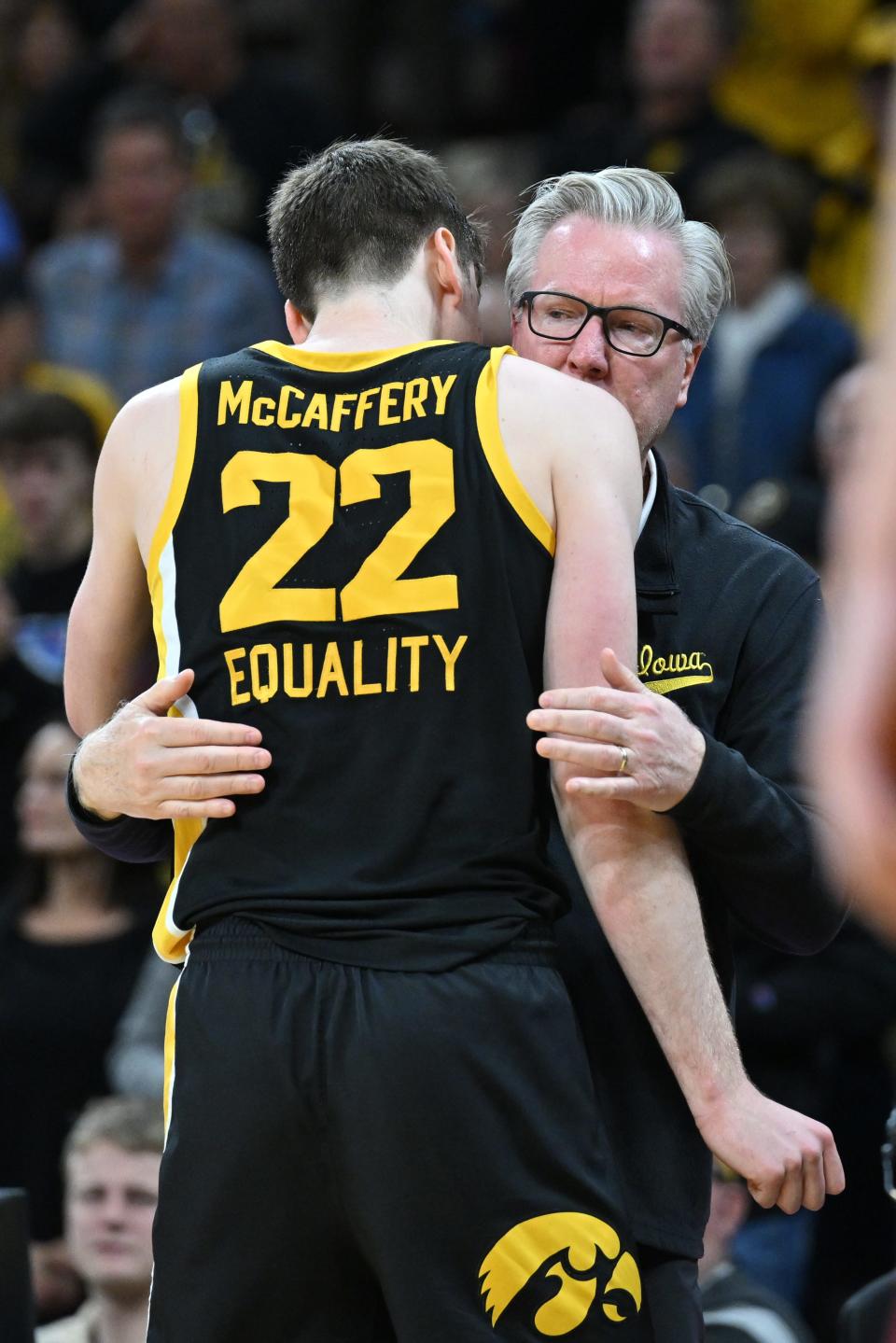
When it comes to college sports, it's a new era, a vastly different era than years past and that was brought to light this month as IU basketball, trying to get over the hump to greatness again, battles on the court -- and off.
Expectations from fans have always been high. But with social media, those fans have more outlets to reach out to players, to praise and to criticize. And the relationship between player and fan is changing further with NIL -- name, image and likeness -- money that, effectively, makes college basketball players openly professional.
Add to that legalized sports betting on college teams and the dynamic between players and fans has veered drastically and not in a good way, according to many.
"Student-athletes continue to report elevated levels of mental health concerns," the NCAA reported in a May 2022 study. "The data indicated rates of mental exhaustion, anxiety and depression have seen little change" in the past two years.
Another NCAA study found 30% of surveyed athletes feel "extremely overwhelmed," with nearly 25% feeling "mentally exhausted."
"I am sympathetic to these 18- to 22-year-olds," said ESPN host and analyst Jordan Cornette, who played basketball at Notre Dame in the early 2000s, before NIL, social media and the proliferation of legalized gambling. "When I played ball, you’d hear someone in the stands if you had a bad game, but you'd tune that out. You wouldn’t go out socially that night because you didn’t want to see people. Or the next day at class, you'd try to keep your head up, wondering what someone might say."
Now, Cornette said, the world has ways to get into your head as a college player at its fingertips. "And how they treat kids these days," he said, "is sometimes awful."
More IU basketball news:IU was 'somewhat dead in the water.' Then Trayce Jackson-Davis called players-only meeting.
'Imagine getting berated at your job daily'
In the days before Twitter, TikTok and Instagram, players were shielded from most unkind comments about their performance, minus a quote in the local newspaper or a clip on a nightly sports newscast. But even those comments rarely got too personal.
Today, college athletes have taken on a "celebrity-like image," said Dr. Katie Greenan, assistant professor of communication at the University of Indianapolis. "They are put on a pedestal."
And when they mess up, the hits can come in full force.
"It has been found that (on social media) people are more apt to be mean or say mean things," said Dr. Greenan. "These fans and these athletes, it’s not just that they're attacking, but they're attacking each other personally, too, and this would not happen as frequently face to face."
Social media is a place where "fake relationships" blossom, good and bad, Dr. Greenan said, creating the feel of a conversation between fans and players.
"However, it’s a superficial relationship and it's founded on shallow content," she said.
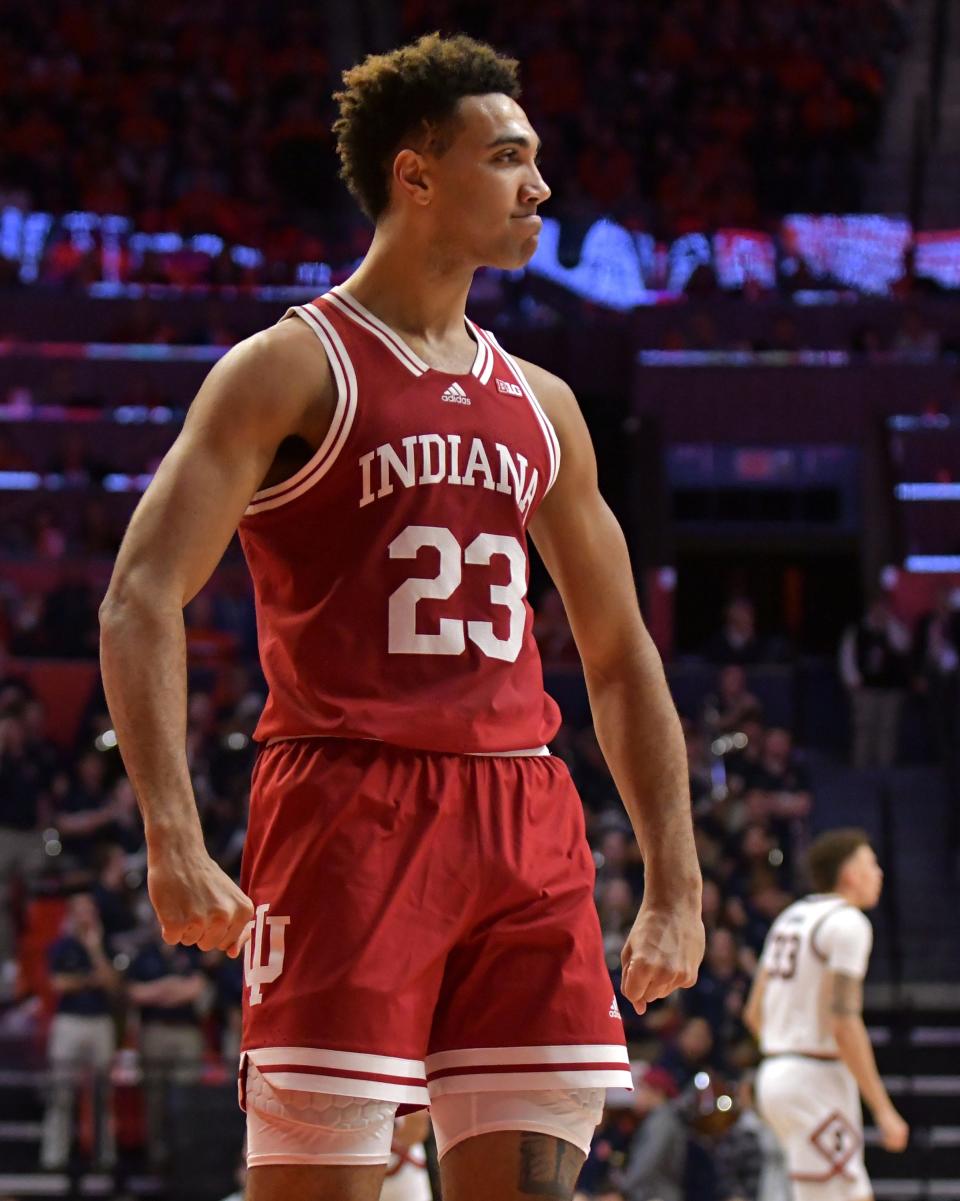
Some IU basketball players fought back at critical fans this month on Twitter.
"The “shut up and win” narrative is stupid," Jackson-Davis tweeted. "I'm a human being first then a basketball player. If you don't know about my character then don’t speak on it. Simple."
After senior guard Xavier Johnson received a personal mention on Twitter earlier this month that said, "'X' it is so frustrating for IU fans! it seems like every time we all get are hopes up & we feel like this is the year for IU. We end up being disappointed every time!"
Johnson responded: "We gone GRIND it out! Early January… don’t only be with us only on our UPS! this team! We gone figure it out!"
Some college athletes, including IU forward Race Thompson who is out indefinitely after injuring his leg at Iowa this month, have fled Twitter. Thompson recently deleted his account.
IU players and coach Mike Woodson declined to be interviewed for this story through J.D. Campbell, associate athletic director, basketball communications.
But former Rutgers basketball player Geo Baker had something to say in IU players' defense.
"I think it’s easy to say just focus and log off," Baker tweeted, "but in today's world social media is just too big a part of life for most people ... seems like these guys have reached their boiling point. Imagine getting berated at your job daily. Not easy man."
And getting harder every day, said Cornette. "There is an expectation from fans. There have always been the 'get off my lawn' guys who say, 'These kids are getting scholarships so it comes with the territory,'" Cornette said. "Now they're emboldened to say, 'They're making money like pro athletes. We can say what we want.'"
Jackson-Davis' NIL deals valued at $613K
When the NCAA voted to allow college players to make money off their name, image and likeness, it changed everything.
"This is an important day for college athletes since they all are now able to take advantage of name, image and likeness opportunities," then NCAA president Mark Emmert said in June 2021.
Some college athletes are now making six figures or more. Alabama quarterback Bryce Young was the highest NIL earner for 2022, according to Action Network, with a total of $3.2 million in deals; that's more than twice what former Alabama quarterback Jalen Hurts makes for the Philadelphia Eagles. Ohio State's Jaxon Smith-Njigba, after winning Offensive MVP in the 2022 Rose Bowl, was rewarded with NIL deals reportedly worth $1.7 million.
Last month, Jackson-Davis was announced as one of the newest members of the Adidas basketball NIL family. He ranks the tenth-highest in an industry valuation of his brand power in the NIL space, based on a variety of factors, worth around $613,000, according to On3.com NIL rankings.
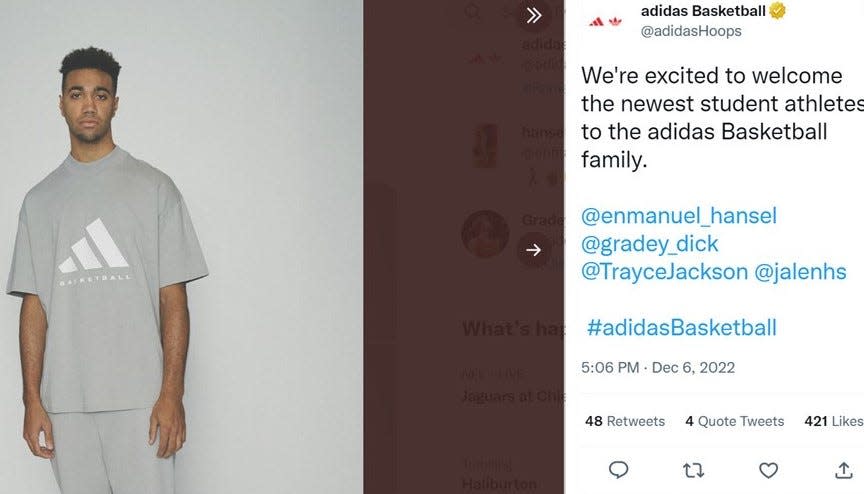
With millions of followers across social media, college athletes can influence people to buy products they promote and raise awareness of social causes. And athlete-influencers have quite a bit of power, a new report from Oddspedia, found.
Nearly 35% of Americans follow athlete influencers, the study found. Instagram is the most popular platform with 66% of that audience, followed by YouTube (48%), Twitter (43%), TikTok (33%) and Facebook (33%).
Nearly half of Americans follow professional sports teams or professional athletes with about 1 in 4 (26%) following college teams, and nearly 1 in 6 (15%) following college athletes.
The most common college athletes people follow are football players, with Division I basketball coming in second, followed by baseball, gymnastics and soccer athletes.
The report found that more than 20% of people have purchased a product promoted by a college athlete and 47% of Americans think college athletes aren’t paid enough.
But the money trail in college sports doesn't end with NIL, said Dr. Andy Chambers. Another major change in the fan-player dynamic has come with money that people can make by gambling on their favorite college sports team.
"What are the unintended aspects of NIL?" Dr. Chambers, a psychiatrist at IU Health, and expert on gambling addiction, said. "And how does this link into organized legal gambling?"
It collides in a perfect storm that changes just about everything between players and fans.
"All these things are happening and we don't know where we're going," he said. "It's kind of a brave new world."
Gambling: University of Dayton fans threaten players after loss
Ohio's top gambling regulator said this week he would ban any fan who threatens athletes whose play affects their betting on a game. The announcement came after University of Dayton basketball coach Anthony Grant complained about criticism his players received after blowing a halftime lead earlier this month.
Grant said in a press conference Tuesday after his team's win against Davidson that it "sickens" him that players have been targeted recently with hateful messages. UD lost last Friday, 63-62, to Virginia Commonwealth, after leading by 14 points at halftime.
During his press conference, Grant delivered an emotional message to those attacking his players "because of their own agenda," suggesting that people who have lost money gambling on the team via sports betting have taken their frustration out on his players.
"I have to say something because I think it's just necessary at this point," Grant said. "You know, these young men, we're asking them to sacrifice quite a bit for us to be able to do what we do and enjoy what we enjoy. So I'm just asking all the Flyer fans just to understand that we're dealing with 18-, 21-, 22-year-olds, and this is about them. This is about them. Alright?"
Grant went on to say, "When we have people that make it about themselves and attack kids because of their own agenda, it sickens me. They have families. They don't deserve that. Mental health is real. ... Take a step back and reevaluate your priorities. And if you can't, we don't need you."
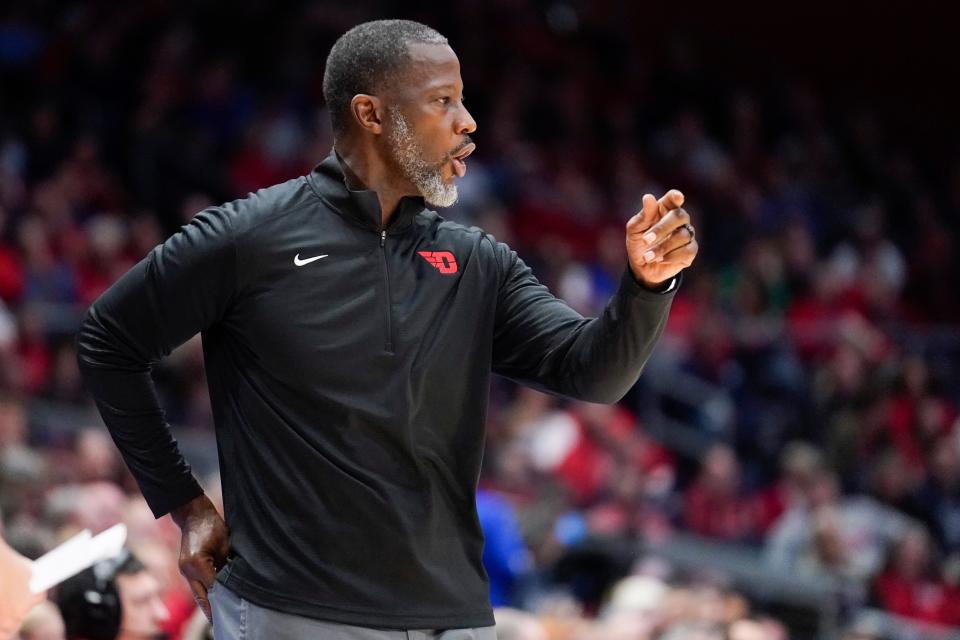
Dr. Chambers says the world of college sports betting "strikes me as disturbing. There is already criticism that college sports has gotten too big as a business."
And he does worry about the athletes.
"Has the normalization and proliferation of sports betting and the access to sports betting charged fans to be over the line? Could that even be rebounding into harassment on social media or even worse case scenarios down the road?" he said. "Here is what I say about that, I don't know that we have enough data yet but it's a hypothesis that deserves attention."
As they take the court, college athletes now may be concerned playing in front of thousands of people who could lose money because they don't make a 3-pointer, Dr. Chambers said.
"It's less ethically and morally haphazard when we're talking pro sports. These athletes are well into adulthood," he said. "When you're talking about college athletes, I think we're getting into a zone where things are very complicated."
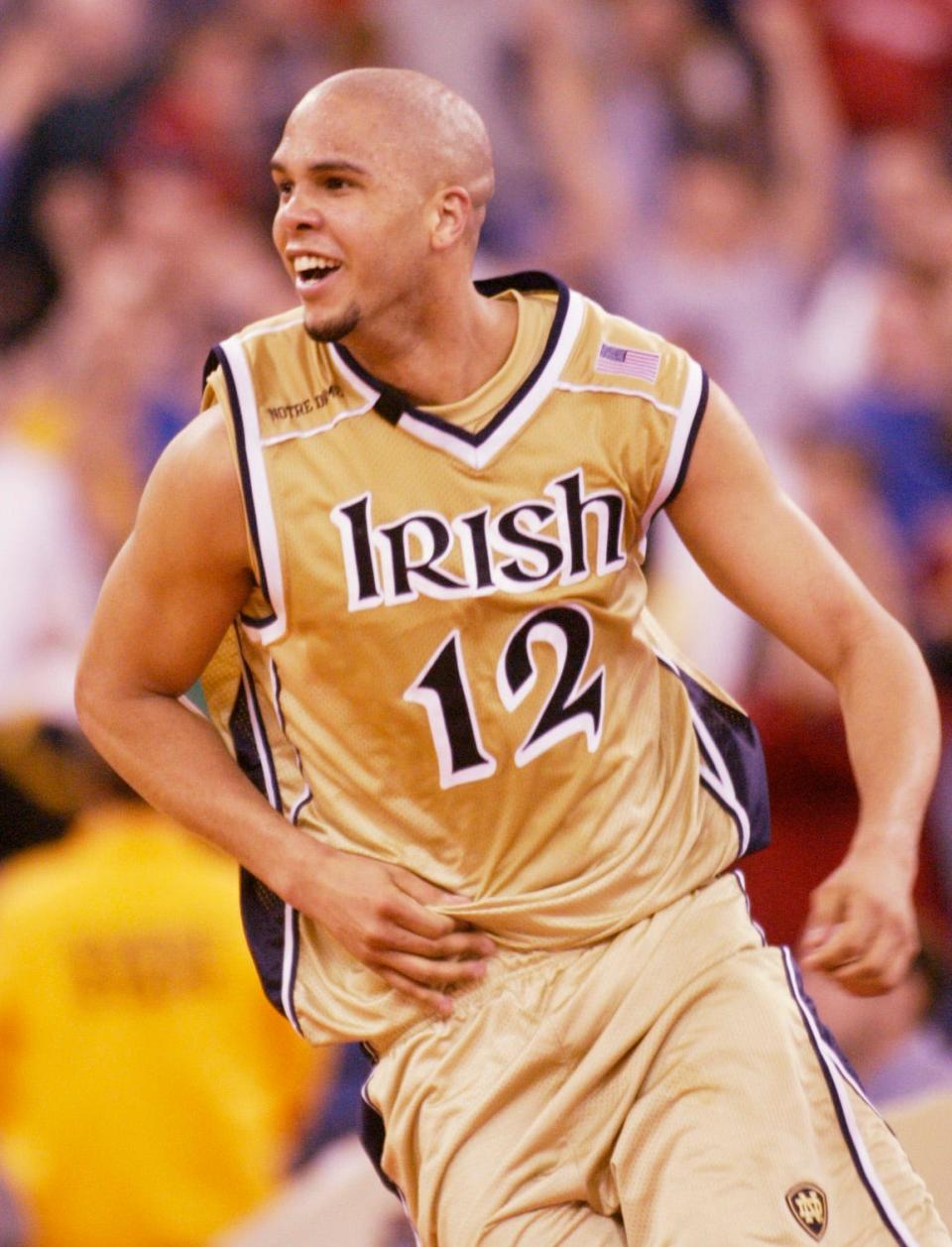
The "vitriol" in college sports has always been around, Cornette said, "but it's the access to it now."
"These kids play a game, then they get online because that’s what 18- to 22-year-old kids do," he said. "And when they are being told repeatedly they are not worthy or are of no value because they missed a free throw or can’t defend? And now you’ve got these crazy fans who have direct access to them? It's a scary time."
Follow IndyStar sports reporter Dana Benbow on Twitter: @DanaBenbow. Reach her via email: dbenbow@indystar.com.
This article originally appeared on Indianapolis Star: IU basketball: Social media, gambling, NIL changes player/fan dynamic

